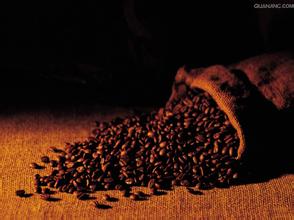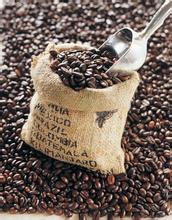Coffee varieties Coffee growing Coffee harvesting and processing
The weak acid fertile soil under volcanic gestation, obvious dry and wet seasons, high temperature and sufficient precipitation provide excellent conditions for coffee cultivation.
Costa Rican Coffee
coffee varieties
100% Arabica. In 1989, in a rare move, a national ban on Robusta cultivation was passed, which was extended to boycott cartimor varieties. See more caturra, catuai.
Coffee harvesting and processing
Hand picked. Harvest time is from August to April, depending on the altitude of the producing area.
Traditional water treatment.
Sun drying. It usually takes about 7 days to reduce the water content to 12%, and it is stored in the warehouse with shell beans. There are also machine dryers that can shorten the drying time to 24 hours. Machine drying is suspected of affecting flavor.
Costa Rican Coffee
Coffee grade
According to the altitude of the producing area, the beans are graded according to the density:
Hard bean hard bean
medium bean
In general, altitude is positively correlated with density. In high altitude areas, the temperature is low, the coffee fruit grows slowly and the density is high; in low altitude areas, the coffee fruit grows faster and the density is low.
Costa Rican Coffee
coffee producing areas
Currently divided into 8 major production areas,
The most famous. Known as the Bordeaux of Costa Rica
Tarasu is located in the province of San Jose, where the capital is located, southeast of the capital San Jose.

The area is an important coffee producing area. 2014, COE Contest, 17 out of 23 ranked beans from Tarasu., English, so also known as "Three Rivers", has fertile soil created by the Irazu volcano, located about 12km north of the capital San Jose.
coffee organization
Costa Rica's National Coffee Institute (iCAF)
Important Notice :
前街咖啡 FrontStreet Coffee has moved to new addredd:
FrontStreet Coffee Address: 315,Donghua East Road,GuangZhou
Tel:020 38364473
- Prev

The coffee producing area of Costa Rica
High-quality Costa Rican coffee is called extra hard beans, and this kind of coffee can grow at an altitude of more than 1500 meters. Altitude has always been a problem for coffee growers. The higher the altitude, the better the coffee beans, not only because the higher altitude can increase the acidity of the coffee beans and thus increase the flavor, but also because the night temperature at the higher altitude is lower, which makes the trees grow slowly.
- Next

A brief History of Coffee which countries in the world produce coffee
Costa Rica, Spanish La Republic de Costa Rica, English the Republic of Costa Rica, full name Costa Rica. San Jose, the capital, San Jose. The official language is Spanish. The administration is divided into 7 provinces, 81 counties and cities and 421 districts. In 1502, Columbus first discovered the coast of CR during his fourth voyage. Subsequently, Spain tried many times.
Related
- Does Rose Summer choose Blue, Green or Red? Detailed explanation of Rose Summer Coffee plots and Classification in Panamanian Jade Manor
- What is the difference between the origin, producing area, processing plant, cooperative and manor of coffee beans?
- How fine does the espresso powder fit? how to grind the espresso?
- Sca coffee roasting degree color card coffee roasting degree 8 roasting color values what do you mean?
- The practice of lattes: how to make lattes at home
- Introduction to Indonesian Fine Coffee beans-- Java Coffee producing area of Indonesian Arabica Coffee
- How much will the flavor of light and medium roasted rose summer be expressed? What baking level is rose summer suitable for?
- Introduction to the characteristics of washing, sun-drying or wet-planing coffee commonly used in Mantenin, Indonesia
- Price characteristics of Arabica Coffee Bean Starbucks introduction to Manning Coffee Bean Taste producing area Variety Manor
- What is the authentic Yega flavor? What are the flavor characteristics of the really excellent Yejasuffi coffee beans?

